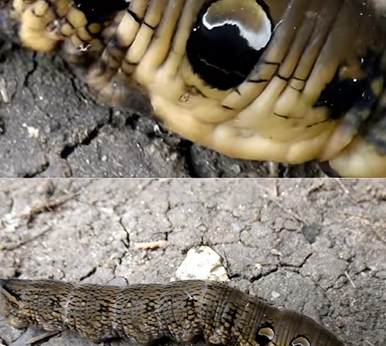In the peaceful town of Santa Fe, Argentina, a scene as unsettling as it was fascinating disturbed the quiet of a neighborhood. Lujan Eroles, 46, never expected such a shock when she stepped into her garden.
What she initially took for a venomous snake was actually a caterpillar, about ten centimeters long, with an incredible gift for mimicry. The creature, with its deceptive appearance, imitated the shape and eyes of a snake almost perfectly.
The discovery immediately drew the attention of her neighbors, alerted by Eroles’s screams. They all gathered to observe the unusual creature. “I had never seen anything like it. It looked exactly like a snake, with really strange eyes,” she told National Geographic.

Shaken by fear and convinced she was dealing with something dangerous, she decided to film the scene and share the video online. Very quickly, the images went viral, sparking a flood of comments, speculations, and theories.
Experts soon identified the mysterious creature: it was the caterpillar of a rare moth, the “Elephant Hawk-Moth,” native to Central America. Its survival strategy relies on an extraordinary trick: imitating the appearance of a snake to deter predators.

Thanks to two dark spots resembling large eyes, this caterpillar manages to look bigger and more threatening than it actually is. Lacking claws or venom, it has evolved to use camouflage and illusion as its weapons of defense.
This chance encounter, which sent chills down Lujan Eroles’s spine and stirred the curiosity of her neighbors, is a vivid reminder of how nature is full of ingenious strategies. It highlights the extraordinary diversity of life and the unsuspected creativity of species to survive in a world where every detail can make the difference.
